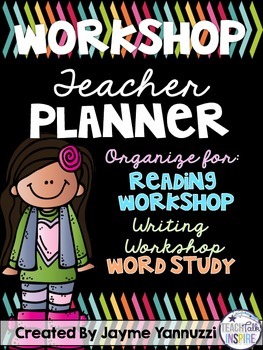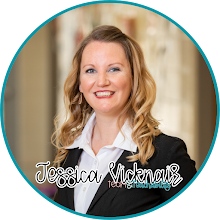Happy Friday everyone! This is Jayme from Teach Talk Inspire and I am so excited to be writing my first post on The Primary Punchbowl! These fellow bloggers have become a wonderful support system for me and I am honored that I'm able to share my ideas and learn from them through this blog. For my first post, I wanted to pop in and share something that I've been working really hard to implement and tweak this year; shared reading.

My district worked very hard over the summer to revamp our literacy block and move further away from using a traditional basal and more towards embracing a balanced literacy approach in our instruction. To say this was a welcomed change would be an absolute understatement. I am loving the new way we're instructing my young learners to read and the different components that I'm now adding into our literacy block. For those of you who are unfamiliar, balanced literacy is composed of several features including:
- Interactive Read Aloud
- Shared Reading
- Independent Reading
- Guided Reading
- Word Study
- Interactive Writing
- Shared Writing
- Independent Writing
I won't lie, it's TOUGH to fit all of the components in every day. But, I've been trying to do as much as I can and still make it enjoyable for my students. The area I'm finding the biggest success with is the shared reading component. I've been lucky enough to train with staff developers from The Reading and Writing Project on the subject and I'm hoping the information I've received from them will help others! I wanted to take a little time today to share what shared reading is and then what it is not. I'm hoping that by shedding some light on this valuable piece of your literacy block, that I'll inspire some of you to take the plunge and give it a try! So, let's get started!
What Is Shared Reading?
Shared reading is an interactive reading experience that occurs when students are encouraged to participate or share in the reading of an enlarged book or piece of text with the teacher. The responsibility of the reading is shared and doesn't fall solely on the teacher or the student. It weaves together all parts of the reading process, including searching, monitoring, comprehension, and fluency.
My favorite way to explain shared reading is by a quote from Brenda Parkes that was shared with me and a group of other teachers from a TC staff developer. Parkes says that, "The physical setting (of shared reading) has to become the equivalent of twenty or more children on my lap at one time."
 How perfect is that?! I've been trying to take that quote and really put it to use when I'm conducting my shared reading lessons throughout the year. Shared reading is a time when students should be encouraged to shout out, read aloud, echo read, choral read, whatever makes you comfortable but they should be encouraged to GET INVOLVED!
How perfect is that?! I've been trying to take that quote and really put it to use when I'm conducting my shared reading lessons throughout the year. Shared reading is a time when students should be encouraged to shout out, read aloud, echo read, choral read, whatever makes you comfortable but they should be encouraged to GET INVOLVED! Shared reading can be approached in one of two ways. The first way to use it in the primary classroom is by choosing ONE text to use across the week but have a different purpose to use with it each day.
Another way to structure your shared reading plans is to choose a different text each day of the week but focus in on one skill throughout the week. For example, you might focus on teaching students to track their words across the page or read through an entire word to make sure it makes sense with the picture. Whatever purpose you choose, stick with it for the entire week.
This year in first grade, I've been been planning my shared reading time based on the first approach; same book for the entire week with a different purpose each day.
What Should A Shared Reading Session Look Like?
To properly implement shared reading, your session should not go longer than 10-15 minutes. The purpose of your shared reading time is to keep your students engaged! Go longer than 15 minutes and the chances of losing the attention of your sweet little friends is VERY high! Each session should have:
- A warm up text: Something students have read before and are familiar with. This could be an alphabet chart, a word study chart, a familiar poem, nursery rhyme, or class song.
- Enlarged text slightly above student reading level. The text can be enlarged on the SMART board, projected under a document camera, or be a big book for all to see.
- A purpose
- Possible follow-up activities for your fifth day of re-reading.
A Shared Reading Weekly Schedule:
Something I have found that really words for me and was suggested by the Reading and Writing Project, is to stick to a weekly schedule for shared reading focus throughout the week. Each day I may use the same text but I am focusing on a different skill while still tucking in some important comprehension and reading foundational skills. Every day I reread the text and focus in on a skill using this schedule:
- Monday: Preview the text, make predictions, and introduce a comprehension strategy like retelling
- Tuesday: cross-check with students. Play guess the covered word and focus on asking "Does it look right?" "Does it sound right?" "Does it make sense?"
- Wednesday: Focus on vocabulary/high frequency words--I love to have the kids use jazz hands when we read a sight word OR glow in the dark pointers to point to the words that we come across on the word wall. You can even have students listen for a word study pattern and write it in on white boards. The possibilities are endless!
- Thursday: Focus on fluency and pay attention to punctuation in sentences
- Friday: Extend the story with comprehension activities like a story map, reader's theatre, exit ticket, or response to reading activity.
Where Can I Find Shared Reading Materials?
Here is a list of great resources that I've found and links to their sites:
keepbooks.org
wegivebooks.org
Reading A-Z
Scholastic Bookflix
LLI lap books
Book Source
Hameray Publishing
wegivebooks.org
Reading A-Z
Scholastic Bookflix
LLI lap books
Book Source
Hameray Publishing
What Is It Not?
Round Robin Reading.
I hope this post inspires you to give shared reading a try in your classroom! If you're looking for an easier way to plan your shared reading sessions across your week, you can check out my Workshop Teacher Planner in my TpT store by clicking the image below.
I hope you have a great day! Happy (almost) Halloween!
Jayme
Jayme
















Jayme,
ReplyDeleteThank you so much for this post! We love the schedule for the week! We will definitely be using it as a resource when planning our lessons!
You Rock!
Ashley and Brooklynn